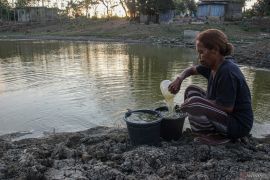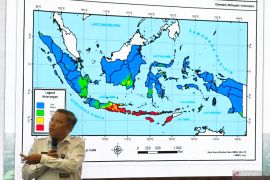The dry Australian (East) monsoon winds, which are currently sweeping across the Indian Ocean toward Asia, are bringing cooler air to the region, deputy for meteorology at the BMKG, Guswanto, said in Jakarta on Tuesday.
Coupled with unusually low sea surface temperatures in the Indian Ocean, this has resulted in a drop in temperatures across Indonesia, particularly in Java, Bali, and Nusa Tenggara.
The phenomenon is typical during the peak of the dry season from mid-July to September.
While the entire region south of the Equator experiences cooler weather, the impact is more pronounced in mountainous areas of Java, such as Dieng, Semeru, Bromo, Sindoro-Sumbing, and Lembang.
Furthermore, the sun's position in the northern hemisphere reduces direct sunlight in Indonesia's southern regions, exacerbating the cooler conditions, Guswanto said.
BMKG has forecast that chilly mornings will continue for the next few weeks, with the coldest temperatures occurring at night.
Related news: NTB govt applies resilient agriculture system to prevent crises
Related news: BMKG highlights importance of Lembang Fault quake mitigation
Related news: BMKG prepares joint expedition to explore earthquake zones
Translator: M. Riezko Bima Elko Prasetyo, Aditya Eko Sigit Wic
Editor: Azis Kurmala
Copyright © ANTARA 2024












